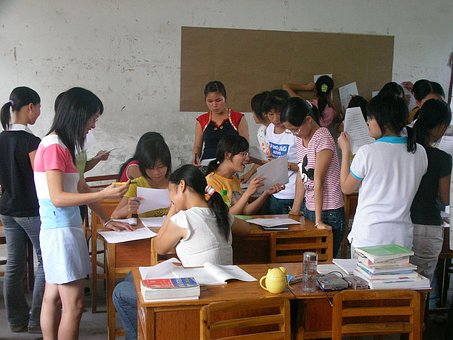 Since the school year started, I've been trying to incorporate more movement into the classroom because research indicates that students who move around have better focus, increased cognitive processing, and better memory retention than those who sit still all day long.
Since the school year started, I've been trying to incorporate more movement into the classroom because research indicates that students who move around have better focus, increased cognitive processing, and better memory retention than those who sit still all day long.Furthermore, movement also increases the amount of blood flowing to the brain, which improves mental clarity. It has been noticed that due to the high usage of mobile devices, student attention span has decreased. In addition schools are cutting back on recess and P.E. time are being scaled back due to budget cuts.
It is agreed by experts that students need at least 60 minutes of movement per day and by incorporating activities needing movement, this helps students get that. The movement gives students a chance to work off stress. Many students find learning stressful, especially if they do not have a good foundation. It can also make the class more interesting and enjoyable. By the time, students reach high school, its harder to find activities which will get them moving around.
I've read about using the four corners instead of a written multiple choice exercise. Let students work a problem, then they choose the appropriately lettered corner to show their answer. My experience with this is if it is used with students who do not perform as well, they are likely to choose the corner the person they think does the best chooses. They are unwilling to stand apart but in a classroom with students who are more sure of themselves it works.
I've used a scavenger hunt with students that goes well. I take a several sheets of 8 1/2 by 11 inch paper and cut each into two pieces. I fold each piece in half in preparation for the work. On the outside, I place a letter in the lower right hand corner. Then I write either problems or vocabulary on the outside, one per paper. On the inside I write the answers but not the answer with the problem, another answer. For instance, I might right x - 2 = 5 on the outside but on the inside the answer x = 2 is written. The idea is to start at one paper, do the problem and go look for the answer. Once the answer is found, the student does the problem on the front, finds an answer until they've worked ever single problem.
I did it with vocabulary in Geometry and it went well. There was a lot of discussion about meanings and words because I defined them using my own words so they'd get a slightly different definition. It took students a bit longer than I expected but they stayed engaged and busy the whole time. I noticed that if they were not sure of the word's definition, they'd race to their books or notes to check.
There are gallery walks. I do mine a bit different. I have students complete the assignment, then I assign one problem per student or per two students. They write it out on a blank sheet of paper showing all their work before hanging it on the wall. Once all the problems are hanging, I have students take their answers around and compare what they got with what is hung on the wall. If they have questions, they can ask for the "Author" to come and answer the questions. When everyone has checked their answers, I collect the work.
I do not have time to incorporate fancy movement such as jumping jacks but I do have time to incorporate movement associated with learning. Let me know what you think, I'd love to hear. Have a great day.
No comments:
Post a Comment